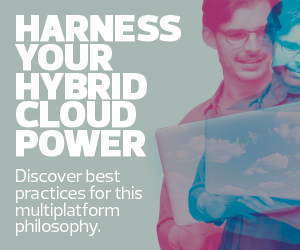Is It Better to Adopt Hybrid Cloud as a Wholesale Philosophy?
CDW recognizes a similar understanding of a hybrid cloud environment and calls the concept a foundational philosophy.
“Running a hybrid cloud effectively requires adoption of patterns and practices that are consistent across whatever platform best suits the application and workload, whether that’s on-premises, in a public cloud or across multiple clouds,” says Chris Gibes, manager of the hybrid infrastructure technology practice at CDW. “In practice, this means aligning operations, organizations and processes to common frameworks and principles.”
Gibes says that CDW’s Unified Cloud concept “starts by changing the way your IT organization operates in addition to automating your on- and off-prem workloads.”
It’s part of a digital transformation effort that leverages platform engineering to transform previously manual tasks into automated tasks and traditional infrastructure into immutable infrastructure.
“With CDW Unified Cloud and platform engineering, your on-prem data center is now unified with a public cloud provider versus two separate and distinct environments,” Gibes says. “Service delivery is now placed either on-premises or in a public cloud. You’ve increased your flexibility, and your technical service delivery model is based on business and financial drivers versus technology.”
DIVE DEEPER: Discover the basic steps to optimize your hybrid cloud environment.
How Automation Can Better of Hybrid Cloud
Andrew Fanning, enterprise architect at CDW, says institutions must leverage automation “to bring some of the promises of the cloud back into an on-premises, and therefore hybrid, world.”
In a hybrid cloud environment, automation can act as the translator, Fanning says. “If I need to deploy on-prem versus the cloud, I can hide some of that in code behind automation, and automation can lead to a more seamless way for the end user to request services, regardless of the location.”













